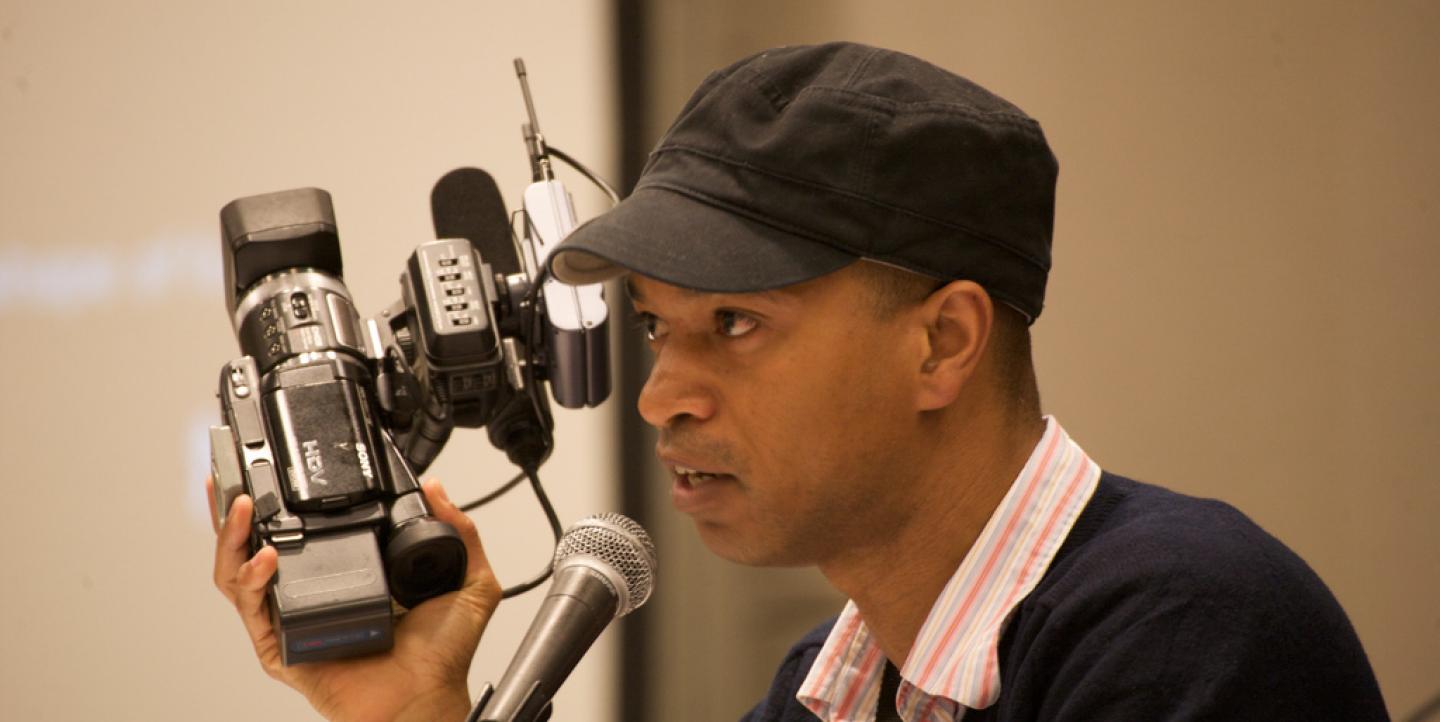Cinema is an art form that captures audiovisual events in a multidimensional way. More and more, video journalists have begun shying away from traditional broadcast formats and experimenting with cinematic elements.
Video journalist David Gyimah is a leading proponent of this movement, known as cinema journalism. Gyimah's held posts at ABC, BBC, Channel 4 News and others, and received a Knight Batten Award for Innovation in Journalism for his interactive site View Magazine. He currently serves as a senior lecturer at the University of Westminster.
IJNet talked to Gyimah about the differences between cinematic journalism and traditional broadcasts, the movement's origins and resources for future videographers pursuing news.
What differentiates cinematic journalism from a traditional video broadcast?
While remembering that "cine journalism" is a broad term, and that it is important to avoid generalizations, I would claim that one advantage of the platform is its tendency to stay in the memory of its audience.
Consider the last video you saw that you can really remember. Chances are, it was either a trailer or a film, something that could be broadly defined as cinematic. I have collaborated on a number of studies regarding this, and we’ve found that adding cinematic elements to video journalism by and large increases its staying power in the minds of the audience.
There are, however, some admitted problems with this, most noticeably the tendency to stray into sensationalism. Therefore what one must consider when incorporating cinematic elements in their work is how to do so without losing sight of the factual elements of the subject itself. In other words, the video journalist must ask themselves, “How do you use artistic practice to make a journalistic film work?”
What was missing from video journalism that gave rise to cinema journalism?
It is important to note here that journalism, and video journalism by extension, is a cultural construct, one formed by literary and social conventions. I would say that the real issue lies in the parameters associated with this construct: The idea of a fixed and objectively ideal format for news.
Loosely quoting Robert Drew, the trouble with TV journalism is that it’s put together by people who understand spoken word but don’t necessarily understand visual images in the way a photographer might. For example, the “news package” format (in which a reporter faces the camera with a scene in the background and directly describes the event) is used almost universally by news outlets, with the assumption being that directly describing an event is the best way to tell the story.
Even something as simple as adding extra cameras (something not possible when the “news package” originated in the ‘60s, as outlets could only afford a single camera) could contribute greatly to the audience’s perception of the event. It’s not so much “absences,” as it is a lack of deviation. What cinema does is give you greater autonomy over how you wish to share the story, allowing you to break free of these norms.
You mention in a Medium post that cinema journalism has come in three waves, and that you believe this latest resurgence will allow cinema journalism to become permanently a part of the media landscape. Why do you think it will stick around this time?
The gatekeepers as you might call them — cable, news executives, etc. — no longer have hegemony over the medium. Previous attempts to mainstream cinema journalism were obstructed by these gatekeepers, with its proponents being met with disbelief and ridicule. However in the modern era, media circulation is no longer dependent solely on television, and already we can see its resurgence in places like Vice. Cinema journalism, due to the creative freedom and multifunctional usage it allows journalists, is full of possibilities in this day and age. In five years or so, I’d imagine that we’d no longer need to have this conversation.
What resources are available for those who wish to learn more about cinema journalism?
Kurt Lancaster has an excellent blog that I would recommend to any interested video journalist. However cinema journalism has not yet reached a point where a journalist could expect to find a wide array of resources dedicated solely to it. Instead, I would advise interested video journalists to take time and study the broader field of cinema itself. While the context will certainly differ wildly, I believe that the tropes and styles utilized by cinema’s finest can be truncated and thereby utilized by video journalists. I will also say here however that no particular format will make a piece “cinematic.” In the end it boils down to the skill of the filmmaker.
The video above embodies Gyimah's cinematic journalism style. Main image of David Gyimah CC-licensed by Flickr via Nick Taylor.

